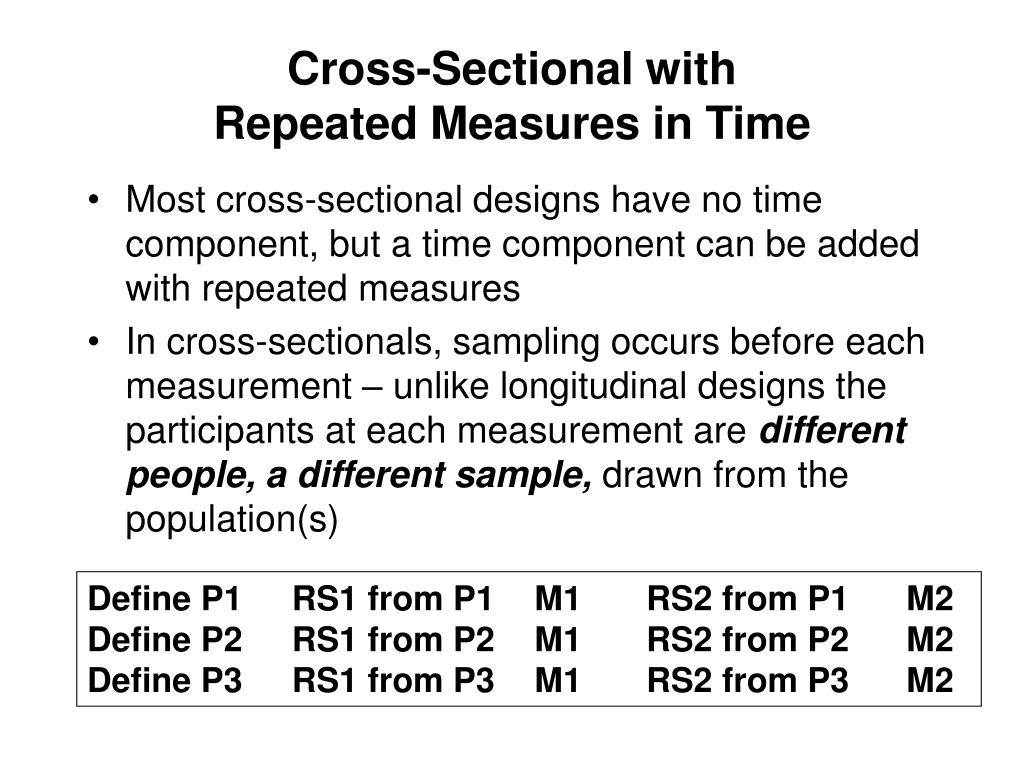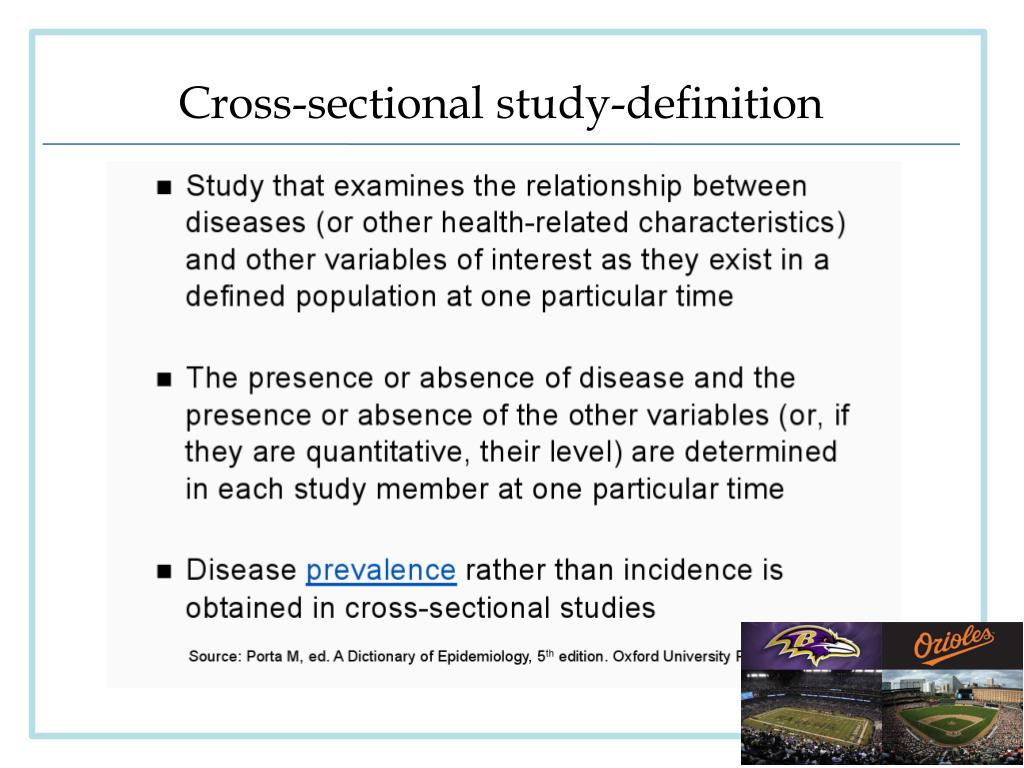Table Of Content

International organisations like the World Health Organization or the World Bank also provide access to cross-sectional datasets on their websites. Epidemiology is a branch of public health that views a community as the “patient” and various health events as the “condition” that needs treatment, according to the Centers for Disease Control and Prevention (CDC). I. A well-designed randomized controlled trial, where feasible, is generally the strongest study design for evaluating an intervention’s effectiveness. Evidence-based practice includes the integration of best available evidence, clinical expertise, and patient values and circumstances related to patient and client management, practice management, and health policy decision-making. Epidemiology is the study of the distribution and determinants of health-related states or events in specified populations, and the application of this study to the control of health problems (1).
Benefits of cross-sectional studies
As cross-sectional studies are cheaper and less time-consuming than many other types of study, they allow you to easily collect data that can be used as a basis for further research. Cross-sectional studies can be done much quicker than longitudinal studies and are a good starting point to establish any associations between variables, while longitudinal studies are more timely but are necessary for studying cause and effect. Cross-sectional studies are designed to look at a variable at a particular moment, while longitudinal studies are more beneficial for analyzing relationships over extended periods.
Characteristics of cross-sectional studies
For the sub-factor scores of simulation design, the feedback score was the highest, and the fidelity score was the lowest, and a study of Korean nursing students reported similar results [29]. Fidelity is categorized into physical, conceptual, and psychological fidelity, and fidelity is an important factor in simulation design because realism immerses learners in the simulation situation. While cross-sectional studies are efficient for gathering data at one point in time and are less costly and time-consuming than longitudinal studies, they fall short in tracking changes over time or establishing cause-and-effect relationships.
Benefits of a Cross-Sectional Study
Later, Westat sent a final paper version via FedEx to eligible adults who had not completed the extended interview online or by paper. Those excluded were people solely of Southwest Asian descent (e.g., Lebanese, Saudi), those with Central Asian origins (e.g., Afghan, Uzbek) as well as various other non-Asian origins. The impact of excluding these groups is small, as together they represent about 1%-2% of the national U.S. Asian population, according to a Pew Research Center analysis of the 2021 American Community Survey.
Midtown Multimodal Bridge Raleighnc.gov - RaleighNC.gov
Midtown Multimodal Bridge Raleighnc.gov.
Posted: Thu, 04 Jan 2024 08:00:00 GMT [source]
Data
Exploratory cross-sectional studies are conducted to explore potential relationships or hypotheses when little is known about a subject. By examining available data, they can generate hypotheses for further research without committing extensive resources to long-term studies. In economics, cross-sectional studies typically involve the use of cross-sectional regression, in order to sort out the existence and magnitude of causal effects of one independent variable upon a dependent variable of interest at a given point in time.
The supplemental samples (i.e., Chinese, Filipino, Indian, Korean and Vietnamese surname lists) also had a probability of selection from the list frames. Because all of the addresses in the list frames are also included in the ABS frame, these addresses had multiple opportunities for these addresses to be selected, and the base weights include an adjustment to account for their higher probability of selection. In the last month of data collection, an additional mailing was added to boost the number of Vietnamese respondents. This was sent in a No. 10 envelope with a wide window and was assembled with a $1 bill visible through the envelope window. If an eligible respondent completed a paper screener, Westat mailed them the extended survey and a postage-paid return envelope.
Large rectangular cross-section tunnel undercrossing urban road by micro pipe jacking and joint assembly structure ... - Nature.com
Large rectangular cross-section tunnel undercrossing urban road by micro pipe jacking and joint assembly structure ....
Posted: Fri, 01 Mar 2024 08:00:00 GMT [source]
They differ from time series analysis, in which the behavior of one or more economic aggregates is traced through time. The statistical literature has numerous articles discussing the pros and cons of using either the POR/OR or PR/RR for cross-sectional studies (Tamhane et al., 2016). Consulting a statistician to discuss the best choice for each project is highly recommended.

What four components contribute to evidence based health care strategies?
We acknowledge that the absence of essential antibiotics during PPS might have affected the outcome interms of the reported frequencies in antibiotics use. It was also difficult to determine whether all antibiotics tested over the past four years maintained their effectiveness or not as they were subjected to varying storage conditions. Besides, both the patient and AST test results sample sizes were comparatively small to other referred studies done in hospital settings. This is because we only targeted suspected MDR cases on return patients and those with prolonged hospital stay. As such the PPS findings on the pattern of antimicrobial use may not be a true reflection of the hospital prescribing practices which are usually dynamic. Moreover, few facilities participated at national level hence findings did not reflect national level.
What is a cross-sectional study?
Unlike descriptive studies that focus on prevalence and distribution, analytical cross-sectional studies aim to uncover potential associations between variables. These studies often compare different groups within the population to identify factors that may correlate with certain outcomes. In practice, cross-sectional studies collect data across a wide range of subjects at a single moment, aiming to capture a comprehensive picture of a particular research question. Researchers might analyze various factors, including demographic information, behaviors, conditions, or outcomes, to discern patterns or correlations within the population studied. Cross-sectional studies are a fundamental research method used across various fields to analyze data at a specific point in time.
A cross-sectional study is a type of research that collects data from a group of people at a single point in time to analyze characteristics and relationships. QuestionPro provides various tools for analyzing your collected data, cross-tabulation, and more. Whether you’re a researcher, marketer, or business professional, QuestionPro can help you gather the data you need to make informed decisions. Check out some of the critical advantages of conducting online research using cross-sectional studies and see if it’s a good fit for your needs.
It has well qualified and well trained laboratory scientists capable of conducting culture and AST. Besides, the laboratory is involved in a number of proficiency testing schemes for bacteriology such as EQuAFRICA and the National Health Laboratory Service (NHLS). Bacteria identification and interpretation of AST results is done by atleast two laboratory scientists working in the microbiology section. An analytical cross-sectional study investigates the relationship between two related or unrelated parameters.
Asian adults were categorized as “living near or below the poverty line” if their approximate family income, after being adjusted for family size, falls at or below 100% of the 2022 federal poverty line. All Asian adults who meet the criteria above are used for the analysis of Asians in poverty, irrespective of their status as students or not. Westat assigned all sampled cases a result code for their participation in the screener, and then they assigned a result for the extended questionnaire for those who were eligible for the survey of Asian Americans. One is the category “4.313 No such address.” This category is for addresses that were returned by the U.S. This status indicates the address, which was on the USPS Delivery Sequence File at the time of sampling, currently is not occupied or no longer exists. The second category is “4.90 Other.” This category contains 588 addresses that were never mailed because they had a drop count of greater than four.
No comments:
Post a Comment